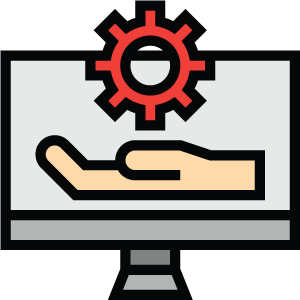Enhance Your Productivity With Automated Workflows
Effective workflows have never been more essential for organisations needing to disseminate increasingly large amounts of data for actionable results. More than just a series of tasks, modern workflows incorporate all manner of available technologies to create an end-to-end processing experience for an item of work (such as an approval process) that’s natural to all parties involved.
Alan Williams | 14th July 2021 | 10 Minute Read

A good workflow creates both business efficiencies and a level of confidence for everyone in the value chain that they have the information and assets they need, at the time they need them, to process an item of work. It also makes sure that they can all clearly add the value expected of them in the simplest way possible.

With the advent of digital technology, workflows have become far more complex on one level, since a modern workflow can incorporate data, forms, reports and notifications across many different types of devices such as laptops, tablets, smartphones and IoT devices. Yet, done well, these new workflow apps are helping managers optimise business process efficiency, and streamline a range of operations, that may previously have involved endless paper trails. Done badly, they can alienate workers that are used to an established manual system that, whilst flawed and inefficient, is at least well understood.
In this blog article we’ll look at the overall goals of workflow automation, discuss some precursors to successful workflow automation, consider some of the most common types of workflows and finally discuss how new Low-code development systems can empower business-level users to create quite sophisticated workflows. And in enabling business users to create solutions that were once the domain of developers and experts, we’ll look how this potentially ushers in a new era of user-defined productivity apps that organisations (particularly smaller ones) could previously not afford or aspire to.
Workflow Automation Is A Game Changer
The tantalising goal of any business process improvement or transformation is to make our work lives more productive - with less repetitive tasks, needless paperwork, fewer mistakes that cost time and increase frustration, better communication, and fewer delays as work moves between levels of management and departments. Every organisation wants that - wasted time and errors are bad for all, both customers and staff. If you can achieve it, workflow automation is a game changer.

However, for many, the challenge of moving away from manual forms-based processing requires either finding exactly the right software or building it themselves - which can be risky and expensive.
That’s because to do workflow automation well means you need to establish proper systems for sharing and storing information. You need to minimise the scope for miscommunication and distractions. And you need to consider how your new processes will improve the speed, consistency, and uniformity of business activities and processes while eliminating unnecessary activities, processes and bottlenecks.
The Power Of Discovery
Workflows start as human processes. A citizen puts in an application for a permit and wants it approved as quickly as possible. An inspector runs an audit on a restaurant for hygiene and reports that improvements are needed, which need to be reviewed and then approved. To improve these processes, understanding the needs of the personas involved at all points of the process is the start of any successful process transformation.
Even with the many fantastic forms and app building tools available now, just taking your paper forms and turning them into electronic ones on a computer or phone screen isn’t necessarily going to improve the work lives of the staff involved. It could even make them more frustrated if they don’t like the technology.

So take the time to run a ‘Discovery session’ for any process you’re aiming to improve. Be clear about the objectives and how you’re going to get the business improvements you’re looking for. Key questions like, “Who’s involved at each stage of the process?”, “What data and context do they need to do their part?” and “What can we do to minimise what they have to key-in?” need to be clearly answered. As is drawing out the workflow and looking for ways to optimise it.
Mapping out your processes in a workflow allows you to get a more clear, top-level view of your business. Even if you have a well-established set of business processes, they may not be telling you the whole story of your results across a range of operations, and where your processes could be improved.
Prototypes - Accept That You'll Get It Wrong Before Getting It Right
Once you’ve done a discovery session and have agreement with the users involved about what you’re going to deliver (this doesn’t have to be a long, protracted process) then you’re ready to prototype. And that’s really important.
When you automate even seemingly simple workflows you can miss details, or misunderstand the user situation or their comfort with technology. So having tools that allow you to quickly deliver your first realistic prototypes to all the people involved in the process, and then re-work them is going to be an essential success factor. These prototypes are more powerful than printed wireframes because they seem more real to the users and they’ll engage more.

Automated workflows should let you easily define all sequences in the workflow by mapping the specific steps needed to complete a task. This means ensuring the job is completed by the proper people, in the proper order, and within a specified timeframe. Moreover, an effective automated workflow can help you easily detect redundancies and eliminate waste.
During your prototype phase (which, again, can be quite quick if you have the right tools) you’ll be able to check that you’ve achieved those objectives at each stage. For example, your automated workflows should mean less need for constant person-to-person interaction via the traditional cycles of emails and meetings. You can see this in action with a prototype, provided it enables you to create a mostly realistic flow.
Create The Right Apps For The Task At Hand
There’s no shortage of tools available to automate workflows, and with workflow management software you can create a fully mapped, or visual representation of a workflow that includes all relevant staff and tasks assigned with full visibility.

Pay close attention to how flexible the integration options are in the Workflow Automation software you're considering. You may need to interact with all sorts of other systems as part of your workflows, so plan for that early.
Ideally, your workforce automation apps will maximise the opportunities for running a workflow with as little human input as possible after users begin activities or fill out initial forms. The best ones contain easy configuration processes requiring no coding, and are easy for business level users with only basic computing skills to manage. Workflow automation software can also be integrated with business process management (BPM) tools and larger CRM solutions into the right tailored solution for your business.
Every workflow is different. Some require more background information to be available than others. Some require many steps, while others require the ability to ask for clarifications and better information. So the ability to create the right app for the specific user needs is going to be important - and there’s no problem in having multiple apps with each one suiting a particular class of users or process. Having flexibility to customise multiple apps whilst still making sure that what you build is maintainable, without costing you lots of time and money, is going to be key.
Effective workflow apps enable the parties involved to understand exactly what's happing in the flow prior to them receiving the work item. Having a 'workflow history' with the ability to provide explanatory commentary available to any party who is processing work will give them visibility into the flow immediately.
This feature is a 'must have' and is likely to 'quieten' the processing by removing the need to call others to discuss their inputs. It also provides the necessary historical background to decisions should the need arise to come back to a particular piece of work later.
Approvals, Clarifications, Rejections And Enrichments
While workflows and automation can be applied to many business functions, the everyday process of approving (or rejecting, or clarifying) requests and submissions is probably the most common of all, and the one you’re probably most in need of if you’re new to workflow automation. These solutions could cover workflows like internal requests for access to resources, employees submitting expense claims or citizens lodging forms for permits and planning approvals.
Approvals workflows sound simple - and if the ‘happy path’ is followed they can be. But automating these flows requires you to think about all the other ‘please explain’ situations. You’ll need to consider how to route work to individuals or approver groups, and when and how to return it to the originator with requests for further content. You’ll almost certainly want to monitor the status of a work item, and often to choose a different workflow path or enable the skipping of an approver level based on some other condition or parameter.
All along the way you’ll want to provide feedback to the originator, and show the history and context to approvers. Notifications and a historical approval path that is intuitively understandable are going to be important.

The Impact Of Low-Code Workflow Solutions - DIY Digital Optimisation
This all sounds quite daunting. And the truth is that, until recently, the exercise of creating the user interfaces that genuinely improve the user experience and that work on lots of devices wasn’t something that non-programmers could approach. Add the complexity of programming the paths those forms submissions will take through a management hierarchy, and dealing with the ‘non happy’ paths, and you’re in territory that was very much the domain of workflow experts and professional developers. And that’s even with the workflow tools of recent years.
But that has changed.
Low-code application builders have enabled non programmers to create sophisticated applications. Lowcode is becoming a necessary part of enabling organisations to keep up with the need for digital transformation. Gartner analysts estimate that by 2024, up to 65% of all new applications will be created through such tools.
Some of these builders have now integrated workflow capabilities that business level users can understand and drive successfully. This will potentially change the accessibility of workflow applications to smaller organisations, and to more departments within a larger organisation. Most IT teams are so stretched they’re not able to keep up, so enabling business users to service their own needs is going to change the velocity of business improvement.
Success Stories In The Field
OneBlink’s Low-code suite (LcS), a sophisticated workflow-enabled app builder, is a good example of a business-user drivable tool that has integrated workflow capabilities. OneBlink LcS enables apps to be built for mobiles, tablets, and PCs. It combines smart forms, manuals and work guides into an easily scalable system designed to adapt to individualised processes based on your team’s specific tasks and needs.
LcS lets organisations of all sizes build the solutions they need, from basic to complex, for their specific business needs. With LcS, business teams can quickly create activity-centric mobile/web applications, whilst IT teams conduct custom coding and take advantage of hosted cloud infrastructure, IoT connectivity and services that remove all the cost and complexity of ongoing operations.
OneBlink’s LcS approval workflow engine can greatly enhance a company’s existing business processes, including those involving major workflow adaptation where specific tasks report on thresholds and invoke rules as to what happens next.
Amongst OneBlink’s many success stories is the workflow solution for SafeWork NSW, where the SaFE Mobility application opened critical business systems to Inspectors in the field, both on and offline. Benefits from the early roll out have included mobile access to legacy systems, duplication of work removed and a reduction in ‘back to base’ travel.
Similarly, the NSW Food Authority had a manual system in place where inspectors were spending approximately two days a week in the office and those in the field were regularly having to call in for more information. Whilst Forestry Corporation of NSW’s Electronic Docketing app allowed for multi-part workflows where one driver can start the delivery and another driver with another device could pick up the truck and continue the delivery. Features included automatic submission/syncing of docket/ GPS data without user interaction and integration directly to FCNSW’s asset/financial/sales system.
In Summary - Workflow Automation Is Increasingly Accessible, Don't Be Scared Off
The right workflow apps can vastly improve ROI across an enterprise (no matter how small) thanks to huge reductions in time and effort for tasks such as manual data entry, collating information across departments and agencies, inventory and asset management and general communication among staff and customers in disparate locations.
Recent innovations that enable business users to drive this sort of solution are going to make a real difference. You now don’t have to change your whole business to fit in with an off-the-shelf product. With the right application builder and workflow automation tool you’ll be able to let your IT department focus on the absolutely critical tasks in front of them whilst your business users improve life for everyone else. All without those business users having to become workflow and application development experts themselves. Definitely a game changer.
